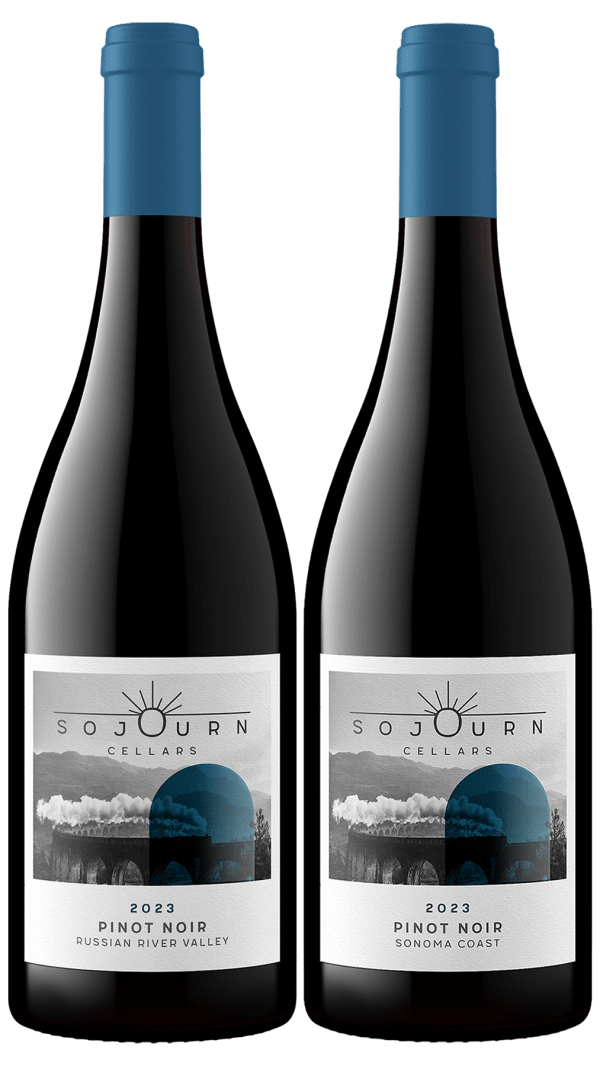Sojourn Cellars Pinot Noirs
Worried the Summer heat will get to your wine before it gets to you? Try our new Summer Hold option here!
- Vintage 2023 from the Sonoma Coast and Russian River Valley
- Packages have been upgraded to 2-day transit for increased protection.
- Available for AZ; CA; CO; CT; DC; FL; GA; IA; ID; IL; IN; KY; LA; MA; MD; ME; MI; MN; MO; MT; NC; ND; NE; NH; NJ; NM; NV; NY; OH; OK; OR; PA; RI; SC; SD; TN; TX; VA; VT; WA; WI; WV; WY
- Sold by participating winery or licensee, fulfilled by Wine Country Connect
About Sojourn Cellars: “Based in the town of Sonoma, Sojourn Cellars is a highly acclaimed winery specializing in the production of artisan Pinot Noir, Chardonnay, and Cabernet Sauvignon wines. We source fruit from celebrated vineyards in both Sonoma and Napa Counties, and we help direct farming operations to assure that our grapes are produced using world-class growing techniques. We have consistently produced high-quality wines with a hands-off natural winemaking style that showcases the character and personality of individual vineyards.”
Who's buying this?
How are you buying your bottles?
Have you ever had to solder something?
-
NopeNope
-
Once or twiceOnce or twice
-
Many timesMany times
-
It's part of my jobIt's part of my job
37 votes
